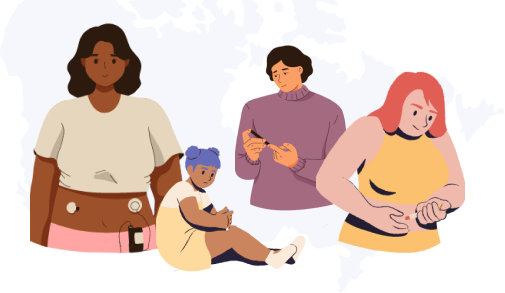While physical activity is known to provide significant benefits for physical and mental health, it can also increase blood sugar variability and hypoglycemic episodes in people with type 1 diabetes (T1D). For them, fear of hypoglycemia is actually one of the most significant hurdles to engaging in physical activity.
If you have T1D, you need to combine a few strategies to enjoy a safe and fun active lifestyle while preventing hypoglycemia. Here are few of these strategies:
- Checking your blood sugar more often.
- Using technology (e.g., continuous glucose monitoring [CGM] systems).
- Eating extra carbs.
- Reducing insulin doses.
- Doing high-intensity physical exercise (e.g., sprint).
The strategies that someone chooses to use can depend not only on their knowledge or circumstances (e.g., type and intensity of activity, blood sugar before activity), but also on their gender (male or female).
The data collected through the BETTER registry (a kind of census of people with T1D in Quebec), which includes more than 2,000 registrants of all ages, point to the same conclusion. The sign-up questionnaires help to highlight and better understand certain aspects of T1D, such as blood sugar management in relation to physical activity.
We compared the answers of 209 men and 375 women to see whether they used different strategies to prevent hypoglycemia when doing physical activity.
Checking blood sugar: there’s no avoiding it
Whether you’re a man or a woman with T1D, the first strategy you use is probably checking your blood sugar when doing physical activity. This strategy is used by 76% of men and women in the data sample.
Which gender eats more snacks?
Men, more than women, generally tend to eat extra carbs before and during physical activity to prevent hypoglycemia. Why is that? The question hasn’t been investigated, but it could be that women are more reluctant to extra carbs when doing physical activity because they feel more concerned about their body image.
An underused strategy
Among the data analyzed, only half of men and women adjusted their insulin to prevent hypoglycemia. It’s true that this strategy can be difficult to put in place since it involves planning physical activity and reducing insulin doses ahead of time. This could explain why men and women—but mostly men—tend to eat extra carbs instead.
In short, both men and women prefer checking their blood sugar over adjusting their insulin to prevent hypoglycemia when doing physical activity. However, fewer women than men choose to eat extra carbs.
Our results show that gender, among other factors, can influence how a person with T1D will reduce the risk of hypoglycemia when doing physical activity. Although this information hasn’t been explored in the past, healthcare teams should take this into consideration in their recommendations to patients.
References:
- Brazeau, Anne-Sophie et al. (2008). Barriers to physical activity among patients with type 1 diabetes. Diabetes care 31(11): 2108-9. Doi:10.2337/dc08-0720
- Prévost, Melinda S. et al. (2022). Gender Differences in Strategies to Prevent Physical Activity-Related Hypoglycemia in Patients With Type 1 Diabetes: A BETTER Study. Diabetes care, dc211899. Doi:10.2337/dc21-1899
Participate in the BETTER registry!

First registry of people living with T1D in Canada.
Learn More






